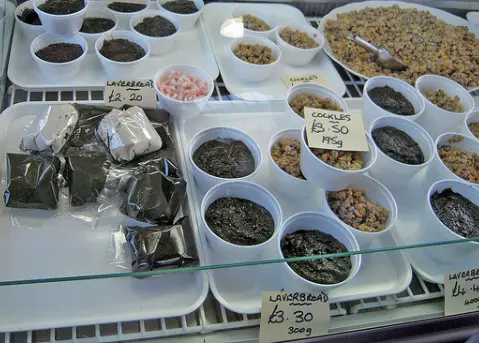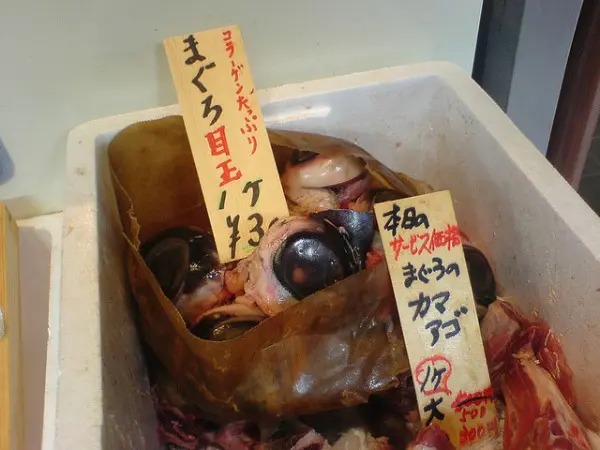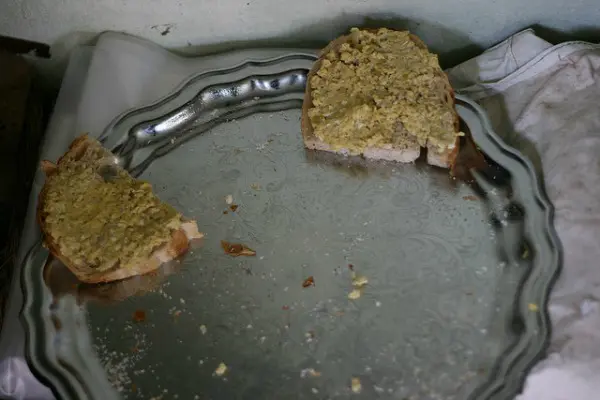At the beginning of the month we brought you some of the strangest ice cream flavours across the globe and just to keep shocking your taste buds and turning your stomachs, we now bring you the world’s strangest food (according to us at least).
Haggis – Scotland

Bagpipes, kilts, and haggis? Some may consider this meat dish of minced sheep heart, liver, and lung mixed with onion, spices, oatmeal, salt and stock, boiled in the sheep’s stomach Scotland’s national dish, but other’s may just consider it a bit too much…
Laver Bread – Wales

Your alarm clock sounds and it’s time to grab some breakfast before heading out to work. What’s on the menu? Bacon, cockles and laver bread. If you’re not Welsh, laver bread is probably drawing a blank in your mental food dictionary. Unfortunately this dish has nothing to do with bread, think instead, green and slimy because it’s actually a form of seaweed. Laver grows well off the west coast of England and therefore has become a Welsh dish, normally rolled in oats to form a patty and fried.
Bird’s Nest Soup – China

This can’t actually be a bird’s nest…but it is, just not the type of twiggy nest you were imagining. The Swiftlet bird’s nest used to make this soup doesn’t use scavenged sticks and bark like other birds, Swiftlets make their nests mostly out of saliva. This gelatinous and rubbery delicacy is one of the most expensive animal products consumed by humans, sometimes referred to as the “caviar of the east.” We think we’ll save our money on this one.
Fried Tarantulas – Cambodia

If we run into one of these huge arachnids we would most likely scream, Cambodians have a different reaction, they just fry them. If you’re walking through the streets of Skuon you will see food stalls selling these furry, eight legged creatures and for just a few cents you can try this crispy, and at the same time, gooey delicacy.
Casu Marzu – Sardinia, Italy

With a name meaning literally “rotten cheese” in Italian there’s not much room left to guess what this Sardinian treat is. Okay, rotten cheese isn’t that crazy of an idea, but hear this, the most common name for Casu Marzu is actually “maggot cheese.” Yes, that’s right, maggot cheese. Why? The larvae of the cheese fly are introduced into the sheep’s milk and fermentation occurs as the larvae digest the cheese fats. Unfortunately this insect encrusted item is hard to find since it has been banned for the health risks involved in consuming cheese in an almost toxic state.
Stink bugs – Indonesia

Can bugs that discharge a foul-smelling liquid possibly taste good? Even though across the world, entomophagy (the eating of insects), is a regular occurrence as these multi-legged creatures are a great source of protein, we’re not brave enough to find out. In Irian Jaya the stink bug is prepared wrapped in leaves and roasted over a wood fire.
Tuna Eyeball – Japan

Japanese food is no stranger to western culture as sushi restaurants are becoming increasingly popular, but what about another Japanese dish,boiled tuna eyeball. We’re thinking it may take quite a bit more time before we get used to our plate staring right back at us.
Pig Brain Omelette – Philippines

If you are in the Philippines and see tortang utak on the menu it’s always good to know what you’re in for. Just to make sure you’re a well-informed traveller we’ll spill the beans about this not so every-day omelette: it’s diced raw pig’s brains, mixed with a few veggies and beaten eggs, pan fried to taste.
Jellied Cow’s Foot – Poland

Zimne nogi in Polish means “cold legs,” and for this jellied dish not just any part of the leg is used, it’s specifically the foot. And not just any type of foot, a cow’s foot. To make it yourself all you need is to cut up a cow’s foot and boil it for hours in water with the spices of your choice. Once this is done you just have to pour the mixture into a pan and refrigerate until it sets into a translucent grey jelly with a layer of fat on the top. At least it doesn’t look like an actual foot once the cooking process is over with.
Blodplättar – Sweden

If you have an iron deficiency then these crispy pancakes will do the trick. Blodplättar is the Swedish word for blood pancake, and they are just that, whipped up blood (usually from a pig) fried up to be a crispy side dish, usually for reindeer meat. Though these aren’t the type of pancakes we’re used to, they are found in other places around the world like Finland (veriohukainen), Estonia (veripannkoogid), and Galicia (filloas de sangue).
SPAM – USA

Spiced ham, or more commonly known as SPAM, came about as a way to feed US Soldiers during WWII and has since then been the brunt of many jokes (think Monty Python’s sketch), spam parties, and even gave the name to the junk mail folder in your email account. The classic variety of this canned mystery meat is made using chopped pork shoulder, ham meat, salt, water, modified potato starch, and sodium nitrite. Though those ingredients don’t sound too horrifying, it’s just the thought of eating meat out of a can that gets us.
Want to see more weird foods? Check out our Pinterest board.
Eaten any of the above foods? Tell us your opinion below!



